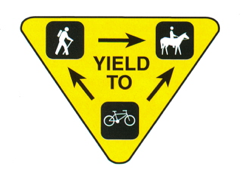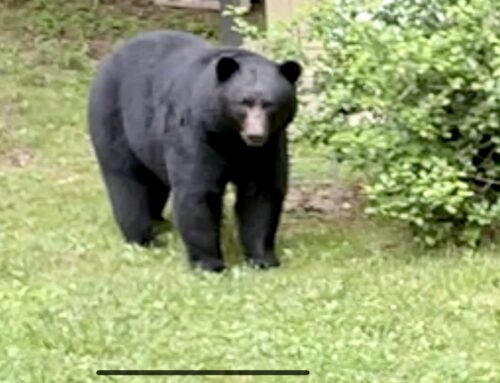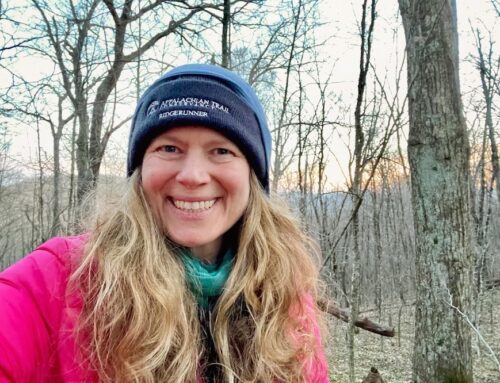Sometimes it can feel like the world is getting smaller…or maybe there are just a lot more people on the earth sharing the same spaces! It has never been more important to be good stewards of our natural, wild places. With more and more use, our forests and parks are seeing more visitors than ever. This, of course, is really a good thing, because we all know the numerous benefits of spending time in nature. I believe it makes us all better people in the end.
In my own effort to be a more compassionate and kind human being, I have been giving a lot of thought about the importance of being respectful to others, especially in the outdoors. This has inspired me to write my own list of basic trail etiquette guidelines, (although they all pretty much fall into the Leave No Trace principles somewhere!)
Basic Hiking Etiquette: How to be respectful of the earth and others on the trail…
Following a few simple guidelines can make hiking more enjoyable and safer for everyone.
- First of all, ALWAYS follow the Leave No Trace Principles:
The Leave No Trace Center for Outdoor Ethics provides standards for outdoor recreation decision-making, which is summarized in the following seven principles.
- Plan ahead and prepare: Poorly prepared hikers, when presented with unforeseen situations, often resort to high-impact solutions that damage the outdoors as well as put themselves at risk. Proper planning leads to less impact and a more joyful outdoor experience.
- Travel and camp on durable surfaces: Damage occurs when surface vegetation or communities of organisms are trampled beyond repair. The resulting barren area leads to unusable trails, unsightly campsites, and soil erosion.
- Dispose of waste properly: Trash in the backcountry ranks high as an ongoing issue. This greatly detracts from natural areas and could potentially cause greater environmental damage. Urinating in the woods is not a violation of Leave No Trace. However, if defecating, waste should be buried 200’ (70 paces) from trails, campsites, and water sources. Please don’t litter – (not even biodegradable items such as banana peels). It is not good for animals to eat non-native foods and who wants to look at your old orange peel while it ever-so-slowly decomposes? If you pack it in, pack it out!
- Leave what you find: Leave No Trace guides people to minimize site modification by avoiding actions such as digging tent trenches, cutting branches from live trees, hammering nails into trees, permanently clearing an area of foliage, rocks or twigs, or removing other natural items. The only souvenirs a hiker should come home with are photographs and happy memories. (And maybe an improved fitness level!)
- Minimize campfire impacts: Because many areas have been degraded by the overuse of fires, Leave No Trace teaches to seek alternatives to fires or use low-impact fires. (Stick with the “4 D’s”- dead, down, dinky (smaller than your wrist), and distanced (collected far away from campsites.)
- Respect wildlife: Help minimize the impact on wildlife and ecosystems.
- Be considerate of other visitors: Following hiking etiquette and maintaining quiet (i.e. using headphones instead of a loudspeaker) allows visitors to enjoy the wilderness with minimal impact on other users. Unplug from devices. Listening to the sounds of nature can be a remarkable meditation.
- When bringing a pet on a hike, be sure to keep it on a leash and under control. Unleashed pets can chase wildlife, trample fragile foliage, and disturb other hikers. Please don’t forget to pack out pet waste as well.
- Do not obstruct the trail when taking breaks. Move to the side of the trail while being careful not to crush foliage on the sides of trails.
- People hiking uphill have the right of way. Hikers and bikers yield to horses, and bikers yield to hikers on multi-use trails…although I always get out of their way, especially on downhills!
- Don’t feed the wildlife. Feeding wild animals only disrupts their natural foraging habits, resulting in potential danger or even death to wildlife and hikers. As the old adage goes, “A fed bear is a dead bear.”
- Walk through the mud puddle and not around it. Widening a trail by going around puddles or debris is bad for trail sustainability. Cutting the corners on switchbacks causes significant damage and erosion. Help preserve the trail by staying on the trail.
- Be friendly to others and always remain aware of your surroundings. Be mindful when hiking in a group; don’t take up the whole width of the trail and allow others to pass.
Thank you for helping to maintain the serenity found in our sacred wild woods!




